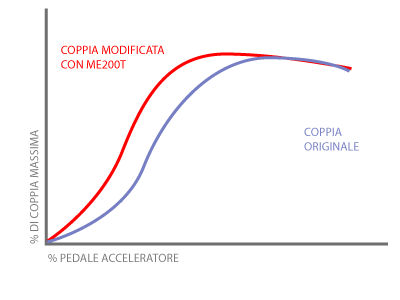PEDAL ACCELERATOR TUNING BOX
How does the accelerator pedal of a car:
All modern cars equipped with electronic fuel injection systems use what is commonly referred to as ” torque management ” .
When tuning the engine , this is mapped as a function of output torque ; is associated with each value of torque supplied by the motor a set of functional parameters of the engine itself , such as throttle opening , amount of fuel injected , advances, phases , etc. ..
All these parameters are managed electronically , variously combined, allow to realize all the torque that can be delivered , from minimum to maximum .
The driver has at its disposal the accelerator pedal to apply the supply of a given torque , which will allow him to obtain the desired vehicle acceleration or maintaining a desired speed .
For this reason, the injection control unit reads the position of the accelerator pedal (index of the will of the driver ) and , according to this delivers the corresponding torque , by suitably combining the values ??of the parameters defined in the mapping .
The correspondence between the accelerator pedal position and torque is commonly called ” pedal law ” and is normally expressed as a percentage.
If we now imagine , in the graph above , to reach the maximum torque with a pedal position of the 80 % , we would get that , with the same position of the accelerator pedal , the torque demand will be greater.
This results in a greater feeling of readiness of the motor.
The MM unit allows very accurate control of the original curve change management allowing to obtain a good drivability at low rpm (driving column or in the city , parking ) while ensuring maximum brightness you want.
Comparison of an original “law pedal” and a modified one (% max torque / % throttle pedal)

To be able to provide the pleasure of readiness related to laws pedal more suitable, without incurring the problems of drivability at low rpm ??of pedal Magneti Marelli developed the pedal module.


